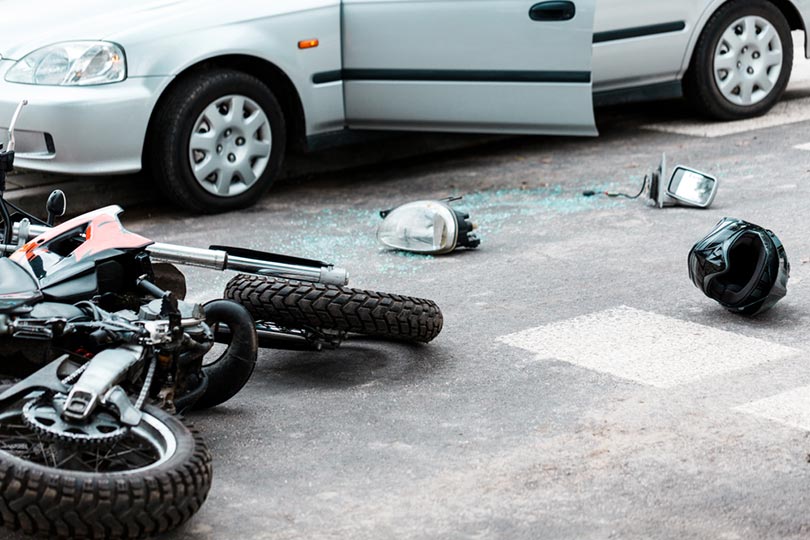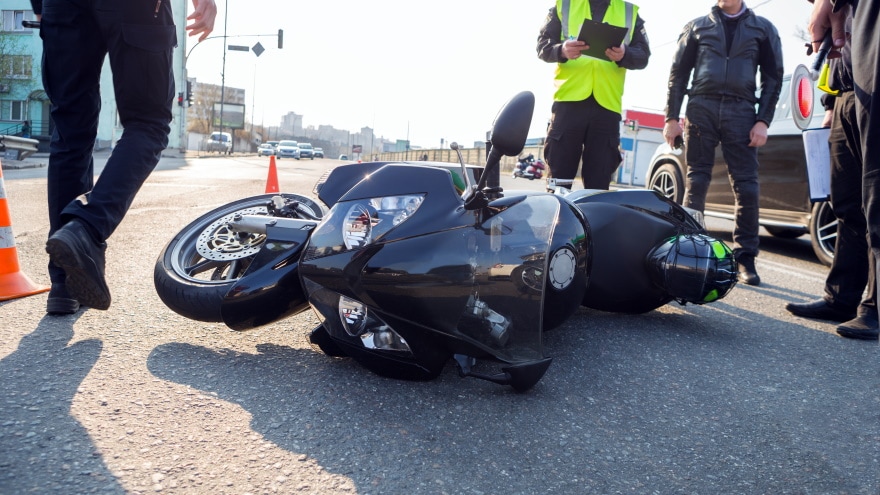13 Electric Scooter Accident Statistics in Canada (2025 Update)
-
Pete Ortiz
- Last updated:

Note: This article’s statistics come from third-party sources and do not represent the opinions of this website.
As electric scooters grow in popularity worldwide and start popping up in major cities, they’re coming with their own controversy. While advocates highlight their zero carbon emissions, portability, and ease of use, naysayers highlight the safety issues they present.
But how dangerous are electric scooters? We’ve highlighted 13 electric scooter accident statistics in Canada to help you understand the risks you’re taking when you decide to operate one on your own.
Click below to jump ahead:
 The 13 Electric Scooter Accident Statistics in Canada
The 13 Electric Scooter Accident Statistics in Canada
- From May 28 to August 24, 2021, there were 675 scooter crashes that required an emergency room visit in Calgary.
- E-scooter injuries account for 3.6% of emergency room traumas in the summer.
- There is an injury rate of 95,400 emergency room injuries per 100 million trips.
- There have been no deaths from e-scooters in Canada so far.
- The overall injury rate for e-scooters is one per 1,500 rides.
- E-scooter injury rates are 600 times higher than other forms of public transportation.
- One-third of injuries from e-scooters happen with first-time users.
- 63% of e-scooter injuries happen with a user who has used an e-scooter less than nine times.
- Less than 1% of injured riders wear a helmet.
- 26.5% of all e-scooter accidents had alcohol as a factor.
- 10% of e-scooter injuries happen to the head or face.
- 68.9% of emergency room visits from e-scooter accidents required at least one procedure.
- 92.8% of e-scooter accidents happen with a single scooter.

Injury Rates
1. From May 28 to August 24, 2021, there were 675 scooter crashes that required an emergency room visit in Calgary.
(Canadian Broadcasting Corporation)

Calgary has become a focal point in the raging e-scooter debate, and it’s in large part because they keep pretty good track of injury statistics there. Over a 4-month period, 675 scooter accidents required an emergency room visit there, which averages out to over 2,000 a year!
2. E-scooter injuries account for 3.6% of emergency room traumas in the summer.
(Canadian Broadcasting Corporation)
While 3.6% of visits might not sound like much, when you run that out over millions of ER visits, that’s a lot of scooter accidents. There is no doubt that e-scooters are putting an extra burden on emergency rooms.
3. There is an injury rate of 95,400 emergency room injuries per 100 million trips.
(Toronto Star)

While 100 million trips are a lot, so are 95,400 emergency room visits. For reference, over the same 4-month period from the stat above, there were roughly 500,000 scooter rides. It’s only a matter of time until there are 100 million trips—that’s a lot of ER visits.
4. There have been no deaths from e-scooters in Canada so far.
(Toronto Star)
While there are lots of sobering statistics on e-scooter accidents, one bright spot is that so far there have been zero e-scooter deaths. While you might get hurt, the chance of you dying in an e-scooter accident is pretty small.
5. The overall injury rate for e-scooters is one per 1,500 rides.
(Canadian Medical Association Journal)

While there are just under 100,000 required emergency room visits per 100 million rides if you look at all the injuries, the number skyrockets to well over 65,000 injuries. While most of them are pretty minor, an injury is an injury!
6. E-scooter injury rates are 600 times higher than other forms of public transportation.
(Toronto Star)
To understand how dangerous e-scooters can be, you need to compare them against other forms of public transportation. And with an injury rate that’s more than 600 times as high, it’s clear that e-scooters are the more dangerous choice.
 Risk Factors
Risk Factors
7. One-third of injuries from e-scooters happen with first-time users.
(Canadian Medical Association Journal)

One of the biggest risk factors when using an e-scooter is simply if you’ve used one before. With 33% of all injuries happening with first-time users, it’s clear that your most dangerous e-scooter trip is your first one.
8. 63% of e-scooter injuries happen with a user who has used an e-scooter less than nine times.
(Montreal Gazette)
While you significantly lower the risk of an injury after you make it through your first trip, you’re not completely out of the woods just yet. With 63% of all injuries occurring from a rider who has used an e-scooter less than 9 times, experience is a big part of the equation here.
9. Less than 1% of injured riders wear a helmet.
(Canadian Television Network)

While this statistic highlights how few riders wear helmets on e-scooters, it doesn’t mean that if you wear a helmet you will avoid the emergency room. Wearing a helmet will help protect your head, but it won’t stop a broken wrist or arm from happening.
10. 26.5% of all e-scooter accidents had alcohol as a factor.
(Injury Prevention)
When you’re getting on a scooter, stay sober. More than a quarter of all scooter accidents had alcohol as a factor, and riding while drunk is illegal.
 Miscellaneous E-Scooter Accident Facts
Miscellaneous E-Scooter Accident Facts
11. 10% of e-scooter injuries happen to the head or face.
(Montreal Gazette)
While you want to protect your head, only about 10% of e-scooter injuries include a blow to the head. Most of the time, your arms and hands take the brunt of injuries. Still, wearing a helmet could save your life and prevent a concussion.
12. 68.9% of emergency room visits from e-scooter accidents required at least one procedure.
(Injury Prevention)

With so many emergency room visits, it’s fair to ask whether they really needed to go to the emergency room in the first place. While most people get to go home, the vast majority of them do need some sort of treatment when they go.
13. 92.8% of e-scooter accidents happen with a single scooter.
(Injury Prevention)
While you might expect multi-scooter accidents to frequently happen, that’s usually not the case. Most injuries occur with a single scooter and falling off the scooter is by far the most common cause of injuries.
 Frequently Asked Questions
Frequently Asked Questions
With electric scooters becoming so popular, it’s only natural to have a few questions. If you’re thinking about riding an electric scooter in Canada, these are some things you should know.
Are electric scooters legal in Canada?
The legality of electric scooters depends on where you are in Canada. For example, while electric scooters are legal in Montreal, they’re illegal in Toronto. Always double-check the local laws and regulations before riding an electric scooter in Canada.

Do you need a license to ride a scooter in Canada?
Once again, this depends on where you’re at in Canada, but in most places in Canada, you don’t need any kind of license, registration, or insurance to operate an electric scooter.
Do you need to wear a helmet when riding a scooter in Canada?
Whether or not you need to wear a helmet while riding an electric scooter in Canada depends on where you are. In Montreal, you don’t need to wear a helmet, but other jurisdictions will require them.
How much money do e-scooters make in Canada?
Electric scooters are a big business in Canada. In 2022 electric scooter companies are expected to bring in close to 31 million dollars, and by 2026, that figure is expected to nearly double to over 61 million dollars. (Statista)

How fast can electric scooters go in Canada?
Each jurisdiction sets its own maximum speeds. In Montreal, electric scooters can’t go faster than 20 km/h. However, other cities and jurisdictions can set their own maximum speeds for electric scooters.
 Conclusion
Conclusion
Ultimately, it’s up to you if you want to operate an electric scooter, but they’re certainly not without risk. But now that you know about the accident stats behind these scooters, you can make an informed decision about what you think is right for you!
See Also: 7 Moped Accident Statistics in Canada
- Canadian Broadcasting Corporation
- Canadian Broadcasting Corporation
- Toronto Star
- Toronto Star
- Canadian Medical Association Journal
- Toronto Star
- Canadian Medical Association Journal
- Montreal Gazette
- Canadian Television Network
- Injury Prevention
- Montreal Gazette
- Injury Prevention
- Injury Prevention
- Statista
Related Read:
- 10 Electric Scooter Accident Statistics in The UK
- 8 Electric Scooter Accident Statistics in Australia
Featured Image Credit: Andrey_Popov, Shuterstock
Contents

 The 13 Electric Scooter Accident Statistics in Canada
The 13 Electric Scooter Accident Statistics in Canada Risk Factors
Risk Factors